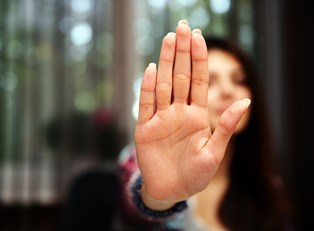The dialog on domestic violence is typically framed in a particular context: violence inflicted within a heterosexual relationship, usually without mention of any racial or gender identity. Domestic violence is an issue reaching beyond cultural lines, sexual orientations, and gender binaries. More often than not, the impact upon minority groups is left unsaid.
1. Women of color experience rates of domestic violence and abuse higher than the national average.
Intimate partner violence includes (but isn’t limited to) rape, physical violence, and stalking. Roughly one-third of women are survivors of domestic abuse. This oft-cited statistic is eye-opening, yet shouldn’t be considered a universal standard. Domestic violence against Black women occurs at a rate 35% higher than that of white women.
Other women of color experience incredibly high rates of domestic violence as well. Native American women also have an even higher rate of experiencing violence at the hands of a partner, 37.5% of women are affected. A survey by the Asian and Pacific Islander Institute on Domestic Violence showed that over 40% of respondents were survivors of intimate partner violence. 23.4% of Latinas have experienced domestic violence as well, and the rate of occurrence varies among Latin American ethnic groups.
2. Domestic violence occurs at a higher rate within LGB (lesbian, gay, or bisexual) relationships.
The discussion of relationship violence among marginalized orientation and gender identities must be more than just a footnote. A survey conducted by the Centers for Disease Control and Prevention showed 43.8% of lesbians and 61.1% of bisexual women experienced sexual or physical violence by a partner, compared to a rate of 35% among heterosexual women. 26% of homosexual men and 29% of heterosexual men reported domestic violence; the percentage rose to 37.3% for bisexual men.
3. Rates of domestic violence are frighteningly high for transgender people.
There isn’t an abundance of studies on trans domestic violence survivors, but an article from the Berkley Journal of Gender, Law & Justice gives us some numbers to think about: according to a data collected by The Survivor Project, a non-profit organization serving trans and intersex domestic violence survivors, 50% of the respondents had been sexually assaulted by a partner; 31% of respondents were domestic violence survivors.
In another study, the National Transgender Discrimination Survey counted more than 6,000 trans and non-binary individuals; out of their sample, 19% cited their gender identity as the cause of violence at the hands of a family member. And, unfortunately, trans survivors face additional obstacles, such as limited access to shelters, discriminatory state legislature, and police de-legitimatization of reported abuse—in fact, trans women are 5.2 times more likely to be victims of police brutality after reporting an incident of domestic violence.
4. Among the aforementioned orientation and gender minority groups, at least half of domestic violence survivors are people of color.
According to a 2014 report by National Coalition of Anti-Violence Programs, LGBTQ+ people of color are 1.6 times more likely to experience physical violence by a partner and 2.8 times more likely to experience this violence in public. LGBTQ+ undocumented immigrants are 2.9 times more likely to be subject to domestic violence.



